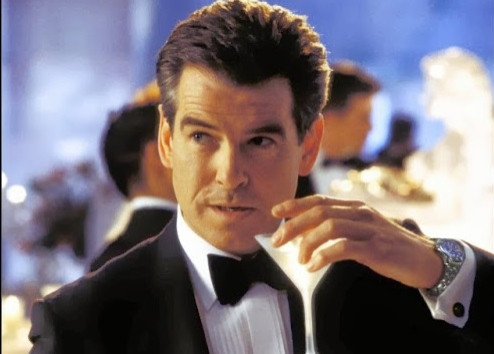The Week In Science: Green Arctic, Hidden Germs, James Bond's Drinking Problem

This week in science, we looked at what might be an ancient lake on Mars, weighed the benefits of organic milk, and gleaned what we could from the autopsy of the comet ISON, which by all accounts did not survive its brush with the sun. But there are many more scientific discoveries that arose this week. Here’s a roundup:
Further complicating your imaginary picture of dinosaurs, some of the ancient beasts probably had fleshy coxcombs, like roosters. A new analysis of a specimen of the duck-billed dinosaur Edmontosaurus reveals this previously unknown appendage, which may have been used to attract mates. [BBC]
Listen to this theory, which was totally not cooked up late at night in a college freshman dorm room: Different wavelengths of light might experience gravity differently. If true, the theory of “rainbow gravity” might complicate things for the Big Bang theory. For now, scientists have no conclusive evidence that this actually happens, but maybe some late nights at high-powered telescopes will yield some insight. [Salon]
The Arctic is a lot greener than it used to be, and it looks like it might be staying that way. [AFP]
Grizzly bears in Yellowstone National Park might be losing endangered species protection. Federal researchers have determined that the bears won’t be threatened by the loss of whitebark pine nuts, one of their main food sources, but other scientists are calling the report incomplete. The pine nuts are less available thanks to an outbreak of bark beetles, assisted by climate change – an outbreak that’s a much more dire situation than the U.S. Fish and Wildlife Services are admitting, according to critics. [LiveScience]
Tree frog feet have inspired a new way to manufacture graphene, the carbon-based material that’s just one atom thick. Taking a cue from the gas-filled bubbles that allow frogs and insects to stick to leaves, the researchers used bubbles to keep a growing sheet of graphene stuck to a silicon base. [GigaOM]
Squeezing energy from water might be a little easier with the help of a mineral called olivine. Researchers found that the rock speeds up a natural chemical reaction that splits off hydrogen gas from water. [BBC]
Nasty germs may be hiding way up in your nose, far out of reach of antibiotics. Normally, Staphyococcus aureus doesn’t cause us much trouble, but when a person gets injured, the bacteria can kick into overdrive and cause serious infections. [NPR]
The real danger to James Bond wouldn’t be from a thug, or a slow-moving laser death trap: It was all those shaken martinis he kept ordering. Doctors estimate that the fictional spy consumed about four times the recommended weekly dose of intoxicating beverages. At that rate of chronic consumption, Bond probably suffered from tremors thanks to a damaged cerebellum, the doctors say. [CNN]
© Copyright IBTimes 2025. All rights reserved.





















